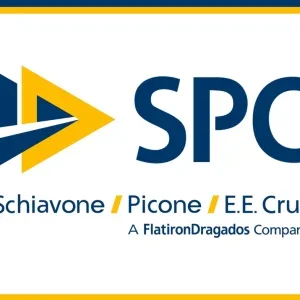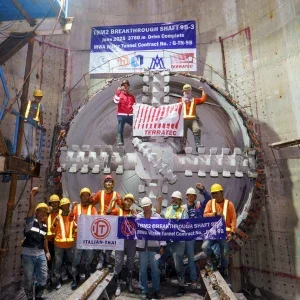The tunnel option for the Fehmarn Belt crossing between Denmark and Germany may have been shunted into second place by the cheaper bridge concept but is to remain in the running until about 2011 as the developer – which has just prequalified consultants to bid for the design – awaits data from further survey work.
Tenders for the 18, 565m long road and rail tunnel option across the 19km long strait between the north European countries are due in December this year from three consortia:
- A JV of Cowi and Obermeyer Planen + Beraten with subconsultants Flint & Neill Partnership and Dissing + Weitling;
- A partnership of Grontmij/Carl Bro, Faber Maunsell, Bung, Grontmij/BGS and Capita Symonds; and,
- A JV of Ramboll Danmark, Ove Arup & Partners International and Tunnel Engineering Consultant with subconsultants WTM Engineers, HTG Ingenieurburo fur Bauwesen, Wilkinson Eyre Architects and Schonherr Landskab.
In early September, Denmark and Germany signed a Treaty to build the crossing.
The project developer – Femern Baelt A/S, which is publicly owned and under the authority of the Danish Ministry of Transport – plans for construction to start in 2012 and is aiming for the link to be opened in 2018. It is keeping the tunnel alternative alive as environmental pros and cons of the rival options are analysed over the next few years as the final, detailed geotechnical and environmental studies, launched in the middle of this year, and undertaken.
Fehmarn tunnel would be a road and rail crossing that has two cells for each service in the reinforced concrete immersed tube – two 10m wide road cell (each with two lands for traffic) and two 6.37m wide rail cells (each with single tracks). Near the mid-point of the strait the concept design proposes that a ventilation island be constructed. Ramps from the tunnel would be 805m and 1,085m long, respectively.
The latest survey will be done in a 2km-wide corridor between Rodby, Denmark, and Puttgarden, Germany, in water up to almost 30m deep. The work is being done under a US$56.5M contract by a JV of Ramboll Danmark and Ove Arup. An expert group of consultants has been assembled to review the data obtained from the survey, and they are: Bern Schuppener of Germany’s Federal Institute for Waterway Engineering and Research; and, Ole Hededal and Niels Foged of Technical University Denmark.
The possibilities for a fixed crossing at Fehmarn Belt has been discussed for a number of decades, including when the planning was underway in the 1980s for Denmark’s first major fixed link project, which joined the island to mainland.
Preliminary design and assessment work for the Fehmarn crossing was done by a JV of Cowi and Lahmeyer in 1999. More recent work, including managing the prequalification of consultants, has been under the control of Sund & Baelt A/S – which owns and operates both the Storebaelt and Øresund crossings, and of which Femern Baelt A/S is a subsidiary.
Drawing on construction experience since the preliminary work – including construction of an immersed tube tunnel for part of the Øresund link – the budget for the tunnel option was given as Euro5.5bn (US$7.35bn at 2007 rates) against Euro4.3bn (US$5.74bn) for the cable-stayed bridge. Both estimates are before detailed environmental costings. Funding for current work has come from the Danish Government with EU subsidises.







